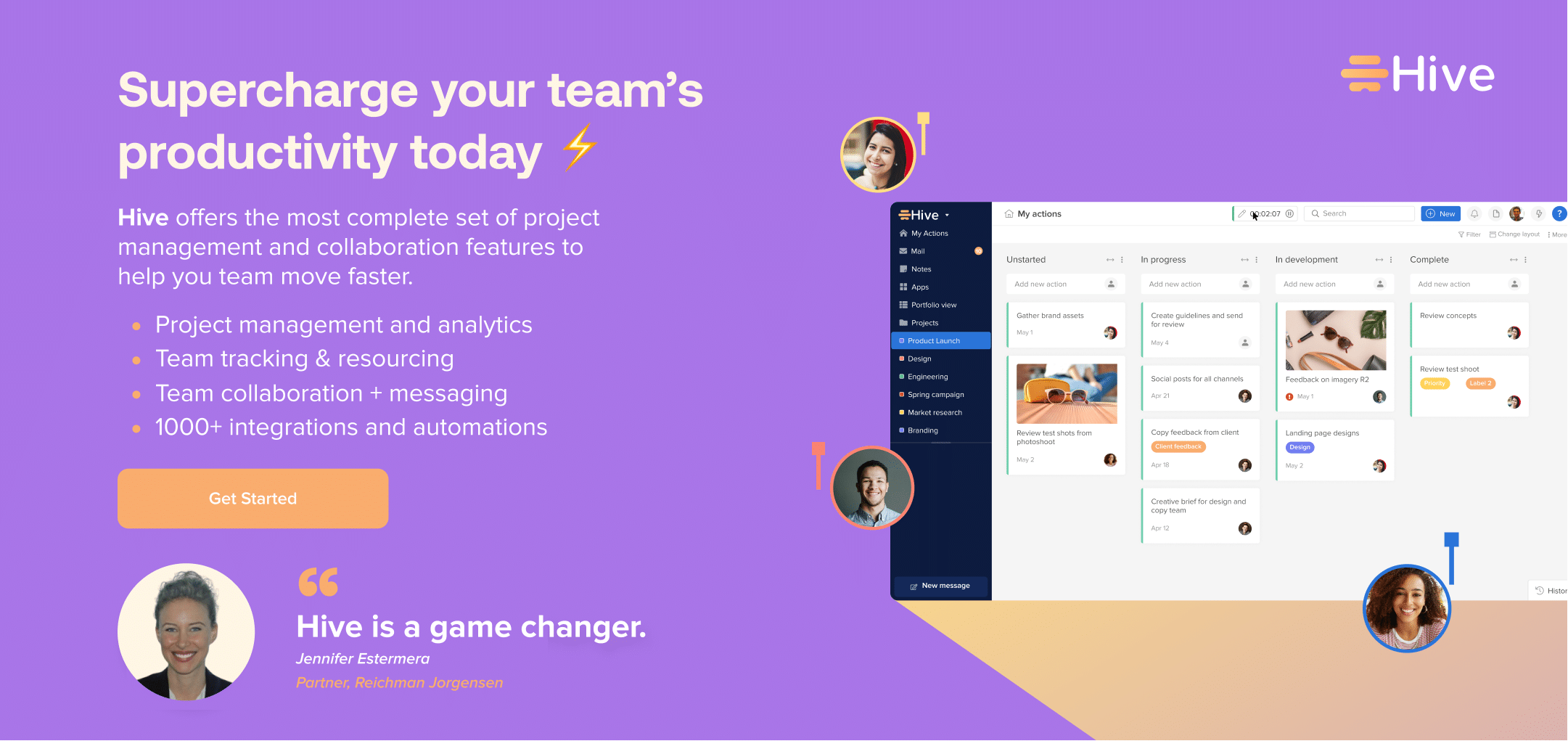It’s 2023 – is there even room for top-down management anymore? You may assume that bottom-up management, which encourages team members at all company levels to make decisions, is the way to go. Authoritarianism doesn’t exactly scream healthy workplace culture and high employee engagement, after all.
You may be surprised to learn that, in certain situations, a top-down management style can still be the best move. Using a project-management tool like Hive can support you regardless of which management style your team operates with. But first, here’s what you need to know about the differences between top-down and bottom-up management and how organizations can leverage both approaches.
The difference between top-down and bottom-up management
“The difference between top-down and bottom-up management is primarily about the flow of authority and decision-making within an organization,” according to Sarah Gonzales, the co-owner of the consulting firm RS Gonzales.
“Top-down management refers to a hierarchical structure where decisions and directives come from the top, and lower-level employees are responsible for executing those decisions. In contrast, bottom-up management refers to a more democratic approach where employees at all levels are empowered to make decisions, operate independently, and contribute to the organization’s direction.”
Gonzales is also a former Foreign Service Officer with the U.S. State Department and has built (and sold) one of DC’s largest tutoring companies, so she knows a thing or two about the different types of management. She says that both top-down and bottom-up management have their benefits and drawbacks and that the best leaders understand that the most effective management style is one that is flexible and contingent on the goals and culture of their organization as well as specific circumstances.
Remember that top-down management doesn’t mean that good leadership practices go out the window. “In either case, great leaders continually communicate the ‘why’ of any decision or decision-making approach,” she adds.
Top-down and bottom-up management: Pros and cons
If you are intrigued and want to understand how best to optimize organizational structure around your own unique needs, it’s important to get clear on the benefits of both top-down and bottom-up management.
According to Gonzales, the benefits of top-down management include clear accountability and decision-making authority and rapid implementation, which is beneficial in contexts such as crisis management or in compliance-heavy industries. That said, the potential drawbacks are not to be taken lightly. “[Top-down management] can also lead to a lack of creativity and innovation, as lower-level employees may feel disempowered and less invested in the organization’s success. In particular, younger employees shrink from what they perceive to be an authoritarian management style, which can contribute to challenges with retention and quiet quitting,” says Gonzales.
On the other hand, bottom-up management can foster innovation and creativity and encourage workers at all levels to feel empowered to contribute ideas and solutions. “An effective example of bottom-up leadership is the Toyota Kaizen philosophy – the idea that any worker can stop the assembly line at their discretion if they see an error. That culture of continuous improvement and respect for the front-line worker promotes employee empowerment, innovation, and increased buy-in from employees,” she adds.
Keep in mind that bottom-up management does come with pitfalls too: decision-making paralysis or a lack of consistency if there isn’t a clear framework for decision-making and communication. And, in a world where making faster decisions can make or break a business, you definitely want to avoid those things.
When to use top-down VS. bottom-up management
Wondering when to use top-down or bottom-up management? When it comes to top-down leadership, it’s usually best to reserve it for times of crisis. “In 2023, there are still many situations where top-down management is necessary, whether it’s a public relations crisis, a recession and layoffs, strict regulatory requirements, or war,” says Gonzales. “However, the reality is that most employees prefer a more collaborative approach, so it’s incumbent upon leaders to communicate in times of crisis why rapid, unilateral decision making may be necessary, and even prudent.”
It helps if, as Gonzales puts it, you have accumulated “a store of goodwill” as a leader: “Ultimately, if a leader has accumulated a store of goodwill, and employees recognize that they consistently serve the best interests of the organization and also respect individual voices, episodic top-down management will be tolerated, if not loved.”
As for bottom-up management, it should be part of your day-to-day dealings with your team to fuel a sense of ownership, encourage innovation and foster a healthy workplace culture where people thrive.
Using Hive to find your best management approach
Hive can help with that. With a top-down approach, it helps give people visibility into the goals of an organization and the data driving the decisions being made. It also helps leaders assign tasks and keep track of everyone’s work. With a bottom-up approach, Hive facilitates the flow of communication between individuals and teams to ensure that important priorities don’t fall through the cracks and prevent the formation of silos.
At the end of the day, outstanding leaders always consider the specific context of a situation and know how and when to adapt their approach. “Overall, the best approach to management is situational, and leaders should consider the specific context and goals of their organization when deciding which approach to take. Effective leaders understand when to use each approach and are willing to adapt their leadership style to fit the situation,” says Gonzales.

